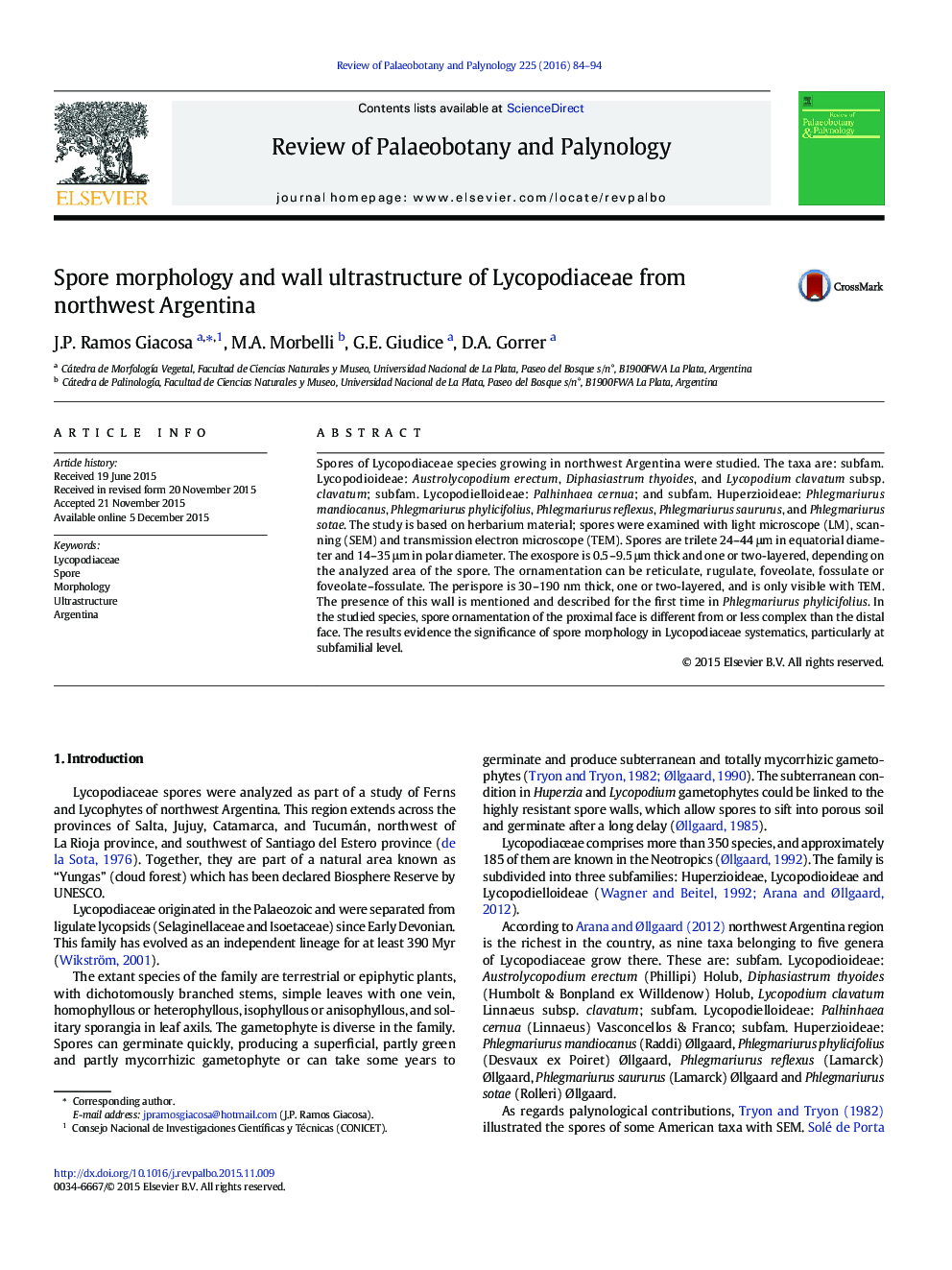| Article ID | Journal | Published Year | Pages | File Type |
|---|---|---|---|---|
| 4750109 | Review of Palaeobotany and Palynology | 2016 | 11 Pages |
Abstract
Spores of Lycopodiaceae species growing in northwest Argentina were studied. The taxa are: subfam. Lycopodioideae: Austrolycopodium erectum, Diphasiastrum thyoides, and Lycopodium clavatum subsp. clavatum; subfam. Lycopodielloideae: Palhinhaea cernua; and subfam. Huperzioideae: Phlegmariurus mandiocanus, Phlegmariurus phylicifolius, Phlegmariurus reflexus, Phlegmariurus saururus, and Phlegmariurus sotae. The study is based on herbarium material; spores were examined with light microscope (LM), scanning (SEM) and transmission electron microscope (TEM). Spores are trilete 24-44 μm in equatorial diameter and 14-35 μm in polar diameter. The exospore is 0.5-9.5 μm thick and one or two-layered, depending on the analyzed area of the spore. The ornamentation can be reticulate, rugulate, foveolate, fossulate or foveolate-fossulate. The perispore is 30-190 nm thick, one or two-layered, and is only visible with TEM. The presence of this wall is mentioned and described for the first time in Phlegmariurus phylicifolius. In the studied species, spore ornamentation of the proximal face is different from or less complex than the distal face. The results evidence the significance of spore morphology in Lycopodiaceae systematics, particularly at subfamilial level.
Related Topics
Physical Sciences and Engineering
Earth and Planetary Sciences
Palaeontology
Authors
J.P. Ramos Giacosa, M.A. Morbelli, G.E. Giudice, D.A. Gorrer,
